Spring, summer, monsoon, autumn and winter, each has its own peculiarities.
The himalayas are impressive no matter which season you visit them in. That said, making an informed decision about which region to go to and in which season could enormously reduce your chances of disappointment because of weather and crowding by tourists.
Spring (Mid March to Mid May)
Spring announces the beginning of the trekking season in the Indian himalayas. As the snow melts in the higher ranges, more and more trails become accessible. Flowers begin to blossom on meadows attracting a variety of insects and butterflies. As the day-time temperatures rise to a comfortable 15 to 20 degrees celsius, nights can be still be quite cold on our treks, with temperatures near freezing at altitudes below 3500 meters.
Pros:
- Temperatures are pleasant to walk from 2000-3500 meters and make for usually excellent hiking weather.
- Excellent views of snow-capped mountains and there might still be residual snow at lower altitudes
- Blooming rhododendrons make for charming forest walks.
Cons:
- A storm (western disturbances) can bring snowfall and temporarily make conditions winter-like again, so make sure you check the weather forecast before heading out.
- Night temperatures can be quite cold compared to summer. Make sure you layer appropriately and get the right sleeping bag (-5 degree celsius comfort should do)
- Higher passes are still covered in snow and access is difficult. It is best to leave these to summer and autumn seasons.
So where to trek in the spring?

Rhododendrons blooming on the Kareri Lake trail in spring. 
Snows haven’t yet melted in late spring in the upper Har Ki Dun valley
Dayara Bugyal, Panwali Kantha, Great Himalayan National Park, Kareri lake and Nag Tibba can be done in this season. In mid March to mid April bright red rhododendrons bloom brightly on the trails.
Summer (Beginning of May to end of June)
The sun is at its highest in the sky and the days are longer. This makes for comfortable temperatures above 2000m. At higher altitudes the snow starts to melt, opening up the mountain passes below. In the end of May meadows turn an inviting lush green and the forests come alive. The passes below 4000m have little to no snow now, making access over them possible and enjoyable. The warmer moist air from the Indian mainland, now penetrates well into the himalayas skies, causing afternoon storms and making passage over the passes unsafe later in the day.
Pros:
While higher passes may still be covered in snow, passes below 4000m are mostly snow-free and should be accessible mid-May onwards.
Relatively warmer temperatures make hiking upto 4000m comfortable.
Longer days give you more time to be able to make it to camp comfortably
Cons:
High temperatures can make the hike tiring below 2500m.
Moist air can build large thunderclouds quickly leading to a storm with a threat of lightning as well.

Lush green meadows in late summer (June) 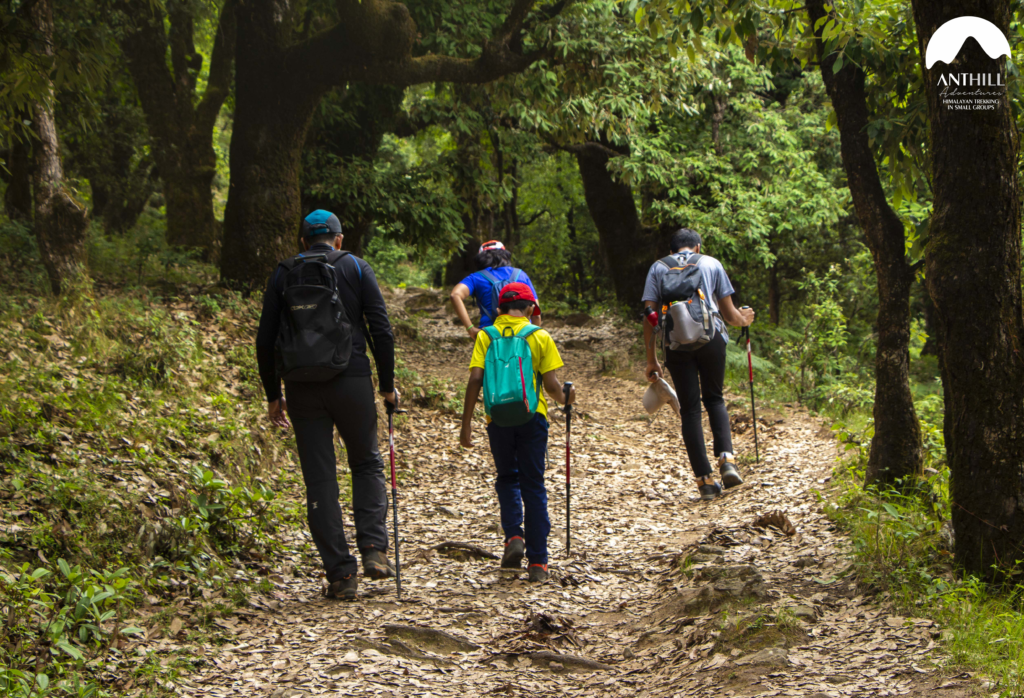
Lower down, below 3000 meters temperatures can be a comfortable 15-20 degrees in summer. 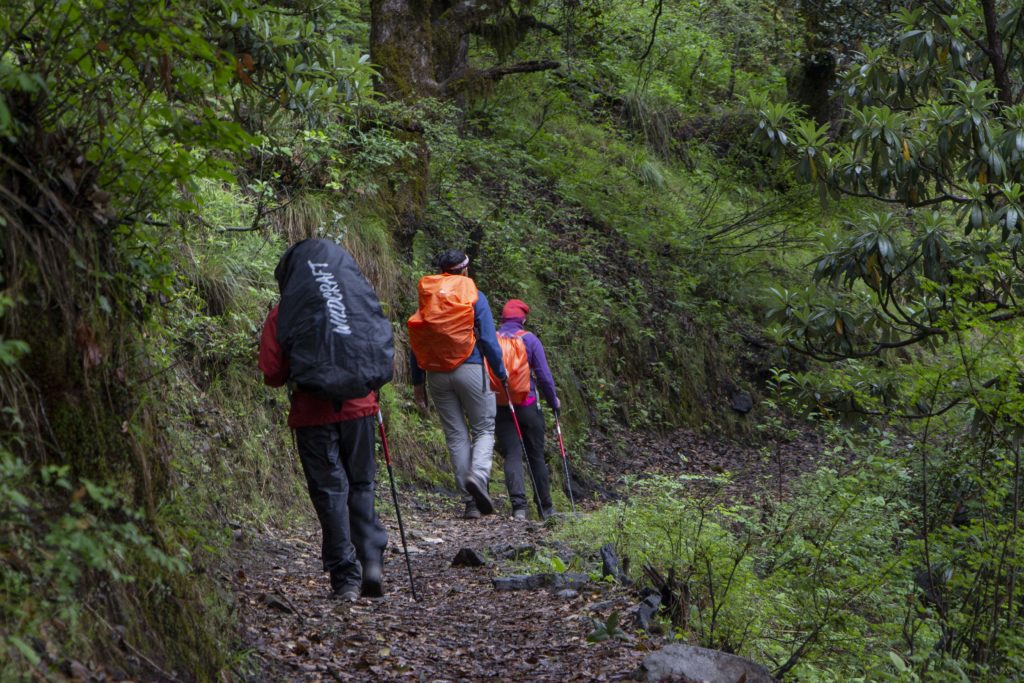
End June can bring precipitation. Backpack covers are an important accessory.
So where to trek in the summer?
Summer gives you the opportunity to venture deeper into the valleys and over passes above 3500 meters. Dodital Hanumanchatti Trek is a great hike in just about any season. Dayara Bugyal is another great option and well suited for beginners.
Monsoon (July to mid September)
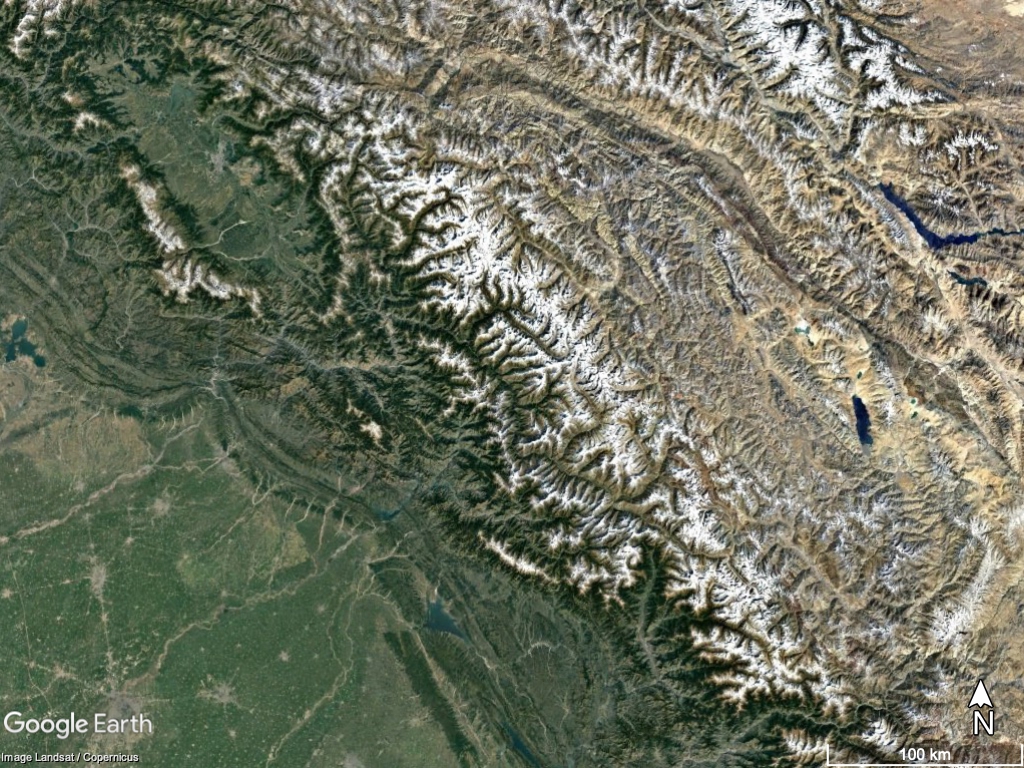
The Indian sub-continent receives most of its annual rainfall during the monsoon months of July, August and early September. Humidity is high and rainfall can make the trails slushy. Streams and rivers swell up and crossing these can add to the objective danger.
Fortunately for trekkers, beyond the Pir Panjal range, the strength of the monsoon weakens and trekking can continue as normal. Infact, it is the best time to hike in these mountains – in the rain shadow of the himalayas! Ladakh, Zanskar, Spiti and Lahaul valleys offer excellent treks in a surprising other-worldly setting. More on that below.
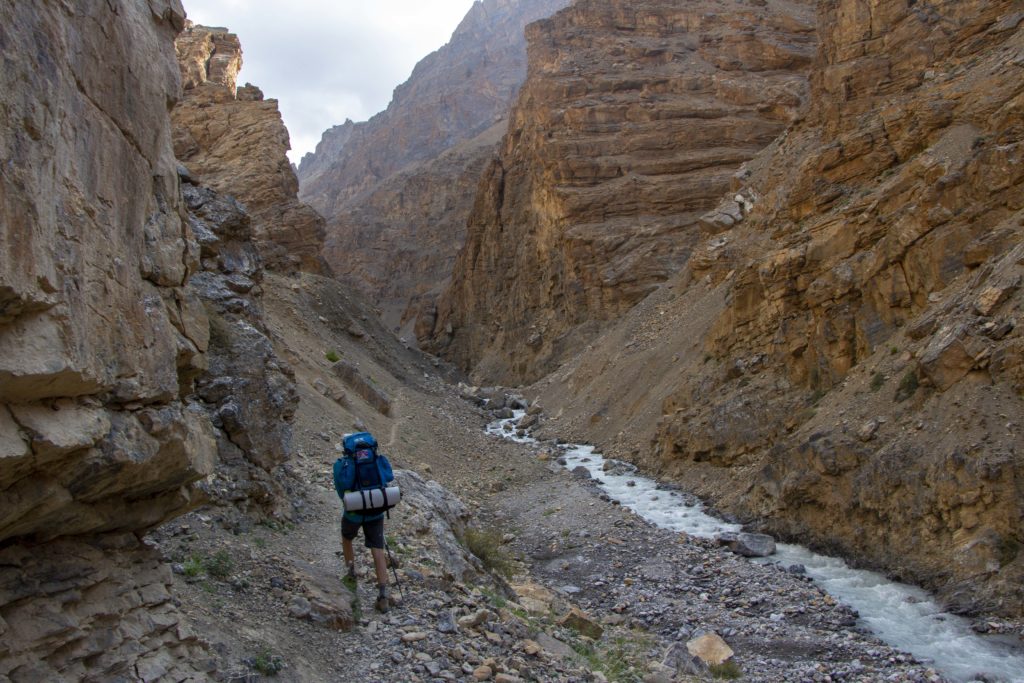
A trekker makes his way through Pare Chu Gorge before climbing to 5400m Parang La Pass in late July. 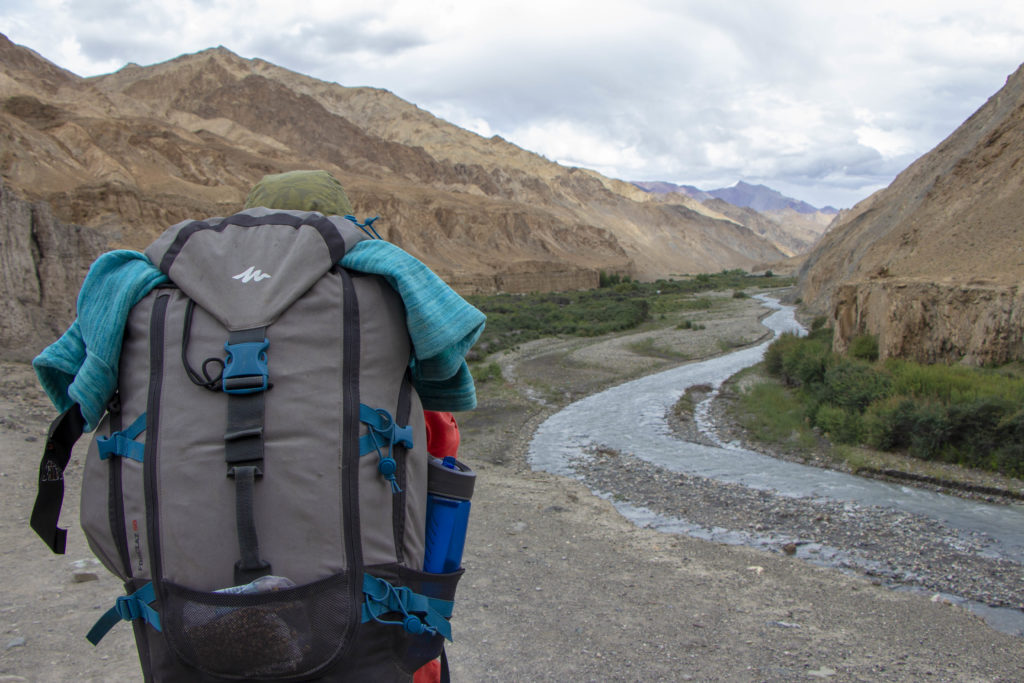
View of the Markha river 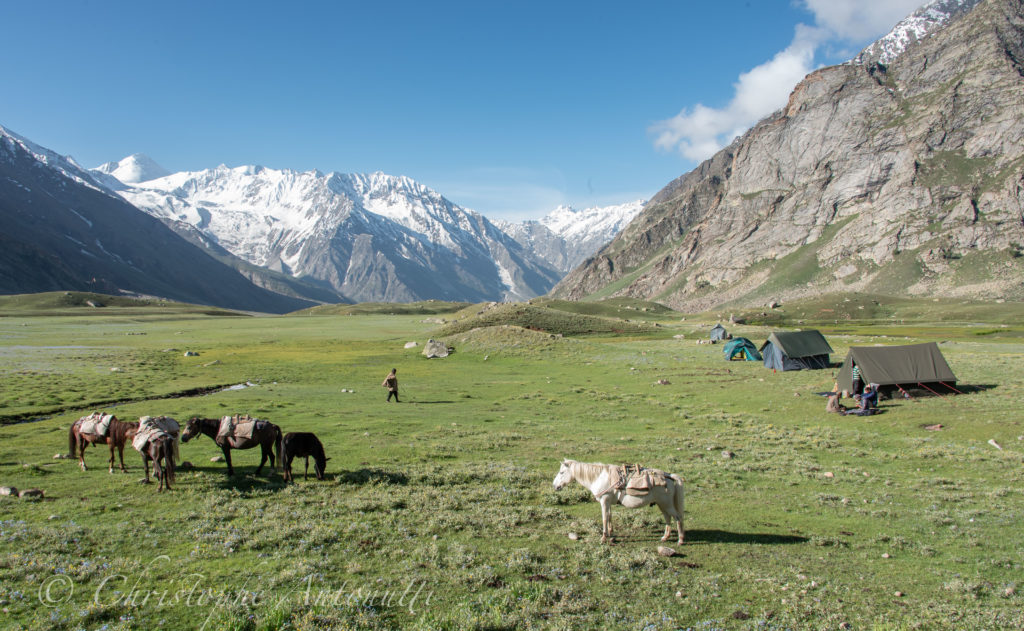
Miyar valley, protected from the monsoon in early July
Pros:
Trek in a spectacular high-altitude setting in what is geographically the tibetan plateau.
Expect clear blue skies (high atmospheric pressure) days and a large trekking window of two and a half months (July to mid-September).
Immerse yourself in truly distinct buddhist culture
Cons:
Access to these areas takes longer by road and acclimatization is essential and can be slow
So where to trek in the monsoon?
The Miyar valley in Lahaul is a remote trek but great for beginners. Moderate treks like Markha Valley offer a window into Ladakhi culture. Technical trekking peaks like Stok Kangri and Kang Yatse 2 are great challenges above 6000 meters. Traverses such as the Parang La pass connecting Ladakh and Spiti are remote and demanding high-altitude treks, only for experiences hikers.
Autumn (mid September to end of November)
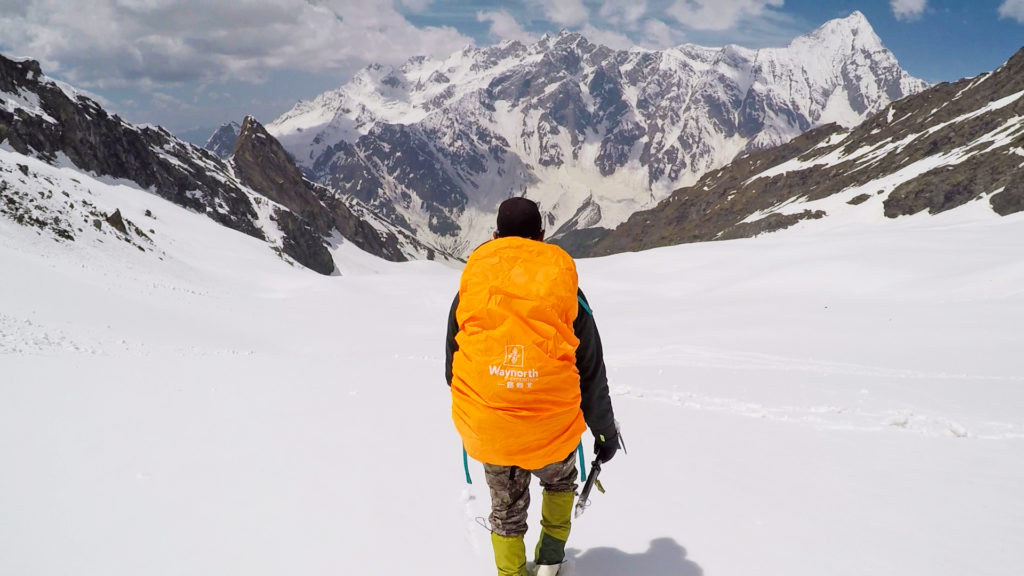
Once the monsoon retreats, a brief weather window allows summiting and crossing over the high himalayan passes. 
Ascending the Friendship Peak (5300m), in the Kullu Valley.
With the monsoon passing retreating in mid-September, nature provides a short window to access some of the most isolated regions of the Indian north-west himalayas over high mountain passes above 5000m. Some of the most iconic treks in the himalayas are best attempted during this period.
This is also a great time for those looking for shorter and easier treks in relatively stable weather.
Pros
This fair-weather window lasts from mid-September to the end of November and provides access and stellar views of the big mountains.

With most pilgrimage routes closed now for the rest of the year, there are far fewer people on the trail. Even the traffic enroute is limited and hotels/ resorts are mostly are available.
The golden hues of autumn start to make an appearance and trails are strewn with foliage making for spectacular scenery!
Cons
Western Disturbances are storms that cause snowfall in the himalayas. These become more frequent as winter arrives. Watch for them.
Colder nights as you get closer to December.
Where to trek in Autumn?
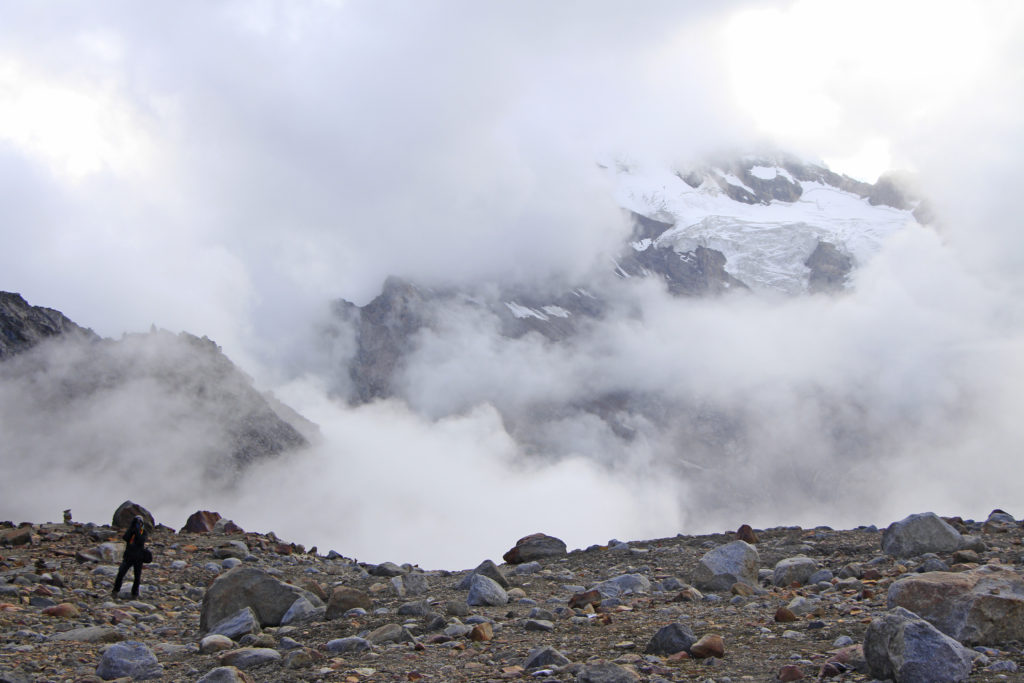
Nag Tibba, The Great Himalayan National Park, Kareri lake, Jalsu Pass, Hampta Meadows, Panwali Kantha, Har Ki Dun are some of easy to moderate treks that you can look up.
For longer and slightly more challenging walks; look up the Dayara Bugyal traverse, the Dodital Hanumanchatti trek or the Minkiani Pass trek.
If you’re looking to step up and do an even more challenging walk, take a look at the Pin Parvati trek or the Friendship Peak Trek.
Winter (December to mid March)
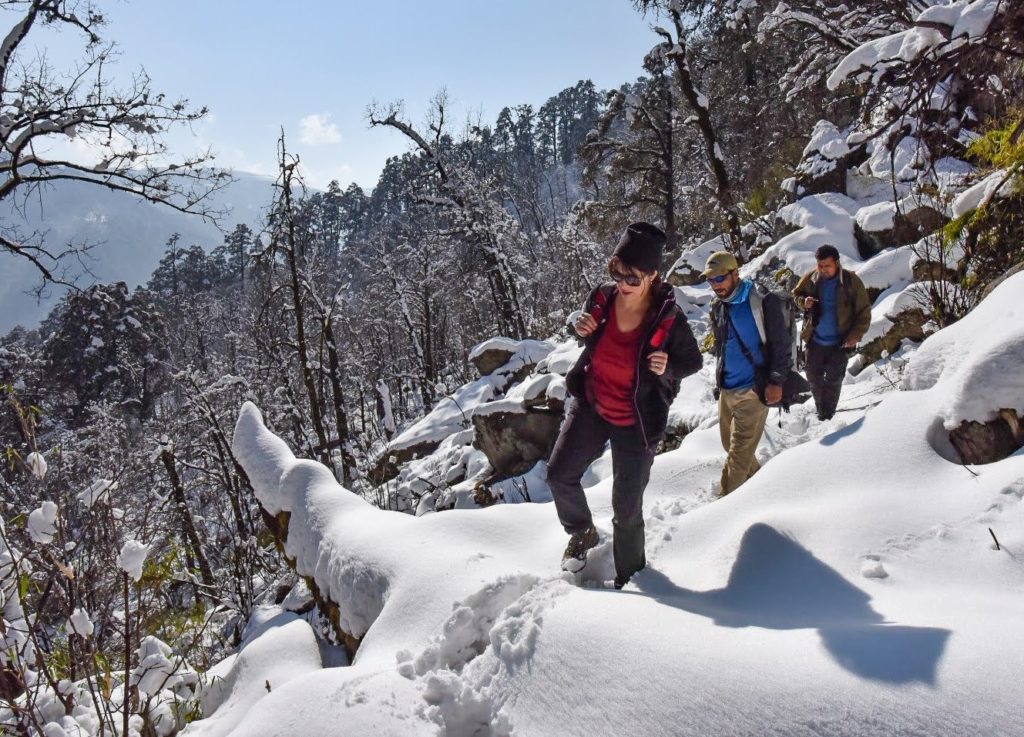
December to mid-March is winter in the himalayas. The frequency of storms (western disturbances) can increase but the weather stays largely stable in between. Minimum temperatures go below zero frequently at altitudes above 2000 meters. It is possible to trek below the snow-line in the winters but most people opt walking, playing and camping on snow.
Pros
Walking and camping on snow!
A sense of adventure that comes from the extreme weather in this season.
Cons
The risk of avalanches is real and the trek needs to be carefully choses to eliminate this possibility
Extreme cold requires appropriate gear and preparation and can be costly to procure.
Read our article on how to layer up properly for a winter trek in the himalayas.
Where can I trek in winter?
Carefully chosen treks and routes can make your trek safer. We constantly keep a lookout on the snow situation and plan the trek accordingly. Try the Dayara Bugyal/ Nag Tibba trek with us to discover the magic of hiking and camping in winter. Of course, we cant forget the magical Chadar trek in winters!
Weather and temperatures can be a big factor in the success of your trek. Mountain guides are familiar not just with general weather patterns but also specificities of the local weather and how it develops and changes over the seasons. Having the right gear for the weather is crucial. By following the advice of your guide you ensure the safety of your self as well as your group.


